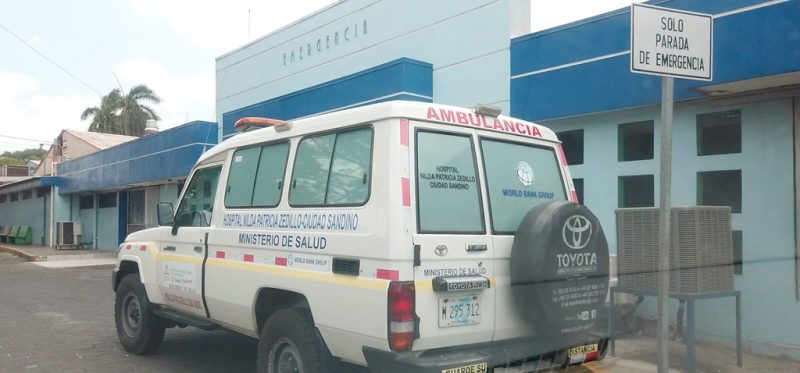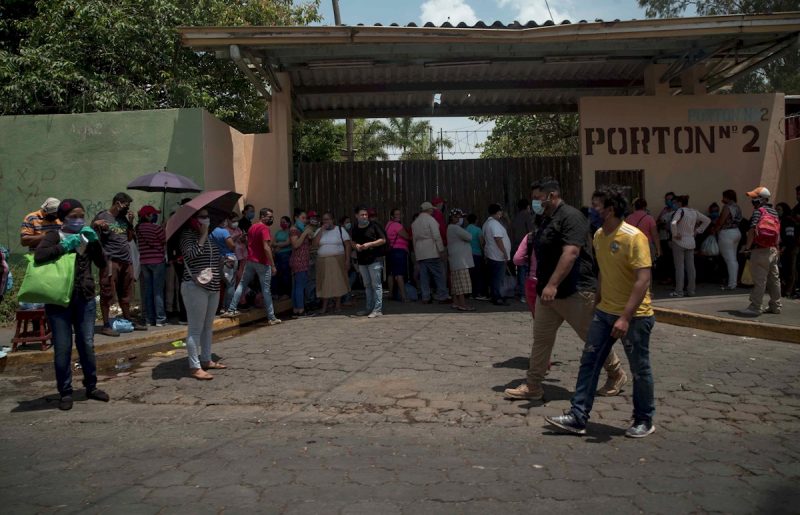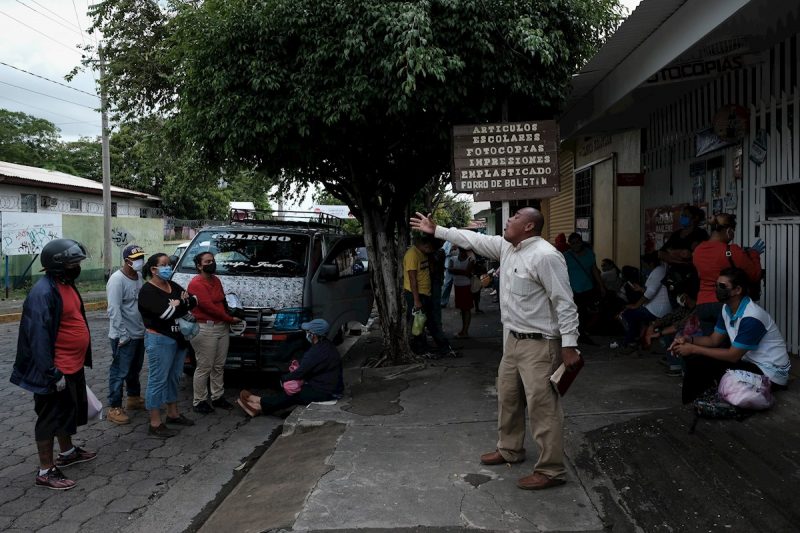Covid-19 in Nicaragua: Med Students & Residents Drafted into Battle

“Even though we’re not yet officially doctors, we’re sent to face the risk of being in the hospitals where COVID-19 cases are treated,” criticizes a pre-intern.
By Yader Luna (Confidencial)
HAVANA TIMES – In a word: unexpected. I was busy with my daily work routine when I received the surprising notice that I should report to the German-American Hospital for the next months, and join the personnel charged with attending patients in the COVID-19 area. I left for the hospital without even having lunch. My appetite had disappeared. I got myself to the site and reported to the pertinent authorities, who conducted me to my area.
That’s how “Elena” (not her real name) recalls her first day working in one of the hospitals with the most cases of Coronavirus in Nicaragua. She’s a resident, not yet a fully certified specialist.
“I arrived, and at first almost no one knew what I was there for: it was all more questions than answers. They quickly explained my work schedule and the protocols to follow,” she says. Once back home, she had to give her family the news and announce “a lot of changes” that would have to be made, so as not to put them in danger. “No contact,” she warned them.
The first COVID shift
The day of her first shift, Elena felt fear coursing all through her body. “I began by getting familiar with what would later become my daily battlefield for the next months. An intensive care specialist arrived and began to give me a thousand instructions.” At that moment there were only five patients in the intensive care ward. “This is going to change a whole lot in the next three days,” the specialist warned her.
The procedures began: aspirating secretions; checking vital signs; examining the ventilators; getting familiar with each patient’s history. “There was an ocean of information to absorb,” Elena recalls.
As the days passed, she began to realize that the patients were constantly changing. “The reason for this was that almost all of them die,” she asserts.
Among the patients that she saw that first day was a young woman of 28, “her risk factor: grade three obesity.” Next to her was another young woman of 30, who had recently given birth due to preeclampsia. “Both were priority cases, and the ones in the ward most likely to recover,” says Elena.
That day went by with dozens of calls, requests for information, internet communications with the family. The phrases that she repeated over and over were: “Your patient’s condition is delicate”; “they’re on a ventilator”; the case hasn’t been evolving well”; and “we’re doing everything possible”.
The questions were also repeated over and over: “But how did the [COVID-19] test come out?” “Were they positive?” For all of those questions, the only response she could give was: “We don’t have access to that information, talk to Administration.”

An avalanche of patients
Every day finds her hungry, hot and thirsty. Her glasses fog up. “With all of the protective equipment, we can’t eat or drink anything,” Elena explains. Around four in the afternoon, she gets a lunch break. Before she eats, she must disinfect herself, which can take one or two hours, depending on the line for the bathroom.
“It’s a relief when I get out of that suit, and I can eat cold food, without much taste, but which calms my hunger. And I can drink great quantities of water,” she states. That first night in the hospital comes to her mind.
“At ten that night, we received some 30 transferred patients, all at once. They came from the “Roberto Calderon” Hospital, from the “Solidarity” Hospital, from the “Lenin Fonseca” Hospital, from the “Velez Pais” Hospital, from all the hospitals of Managua,” she recalls. In the blink of an eye, the ten ICU beds in her ward were full.
“We were forced to evacuate the surgery wards in order to be able to accommodate the patients that kept coming. Suddenly, you realize that the number of beds in use have increased, but personnel hasn’t,” Elena says.
She remembers how terrible it is to see the first patients die. The authorities are notified, and they take charge of filling out the death certificates “of people they never knew or treated.”

“The pain of losing the battle”
Days pass, and this resident got used to her new routine. To the five showers in each 24-hour shift. To bringing three changes of clothing, having lunch at four in the afternoon, eating supper at one in the morning.
“The patients multiply and die by the dozens. There aren’t enough of us to cover. Other specialties have to help, and from one day to the next, suddenly the whole hospital is 100% COVID-19 patients,” she continues.
“The anesthesiologists are no longer the ones in charge of intubation, due to the quantity of emergencies and the load of critical cases. We put fear to one side and now we’re the ones to hook the patients up to the tubes, each time with a little more skill,” she judges.
The patients that have been there the longest, “give us the hope of saving them, but in many cases, they die…. It enrages you, it frustrates you, not to be able to win the battle against death,” she says. In her mind, she prays for their souls.
Until one day, Elena herself began to have symptoms, and realized that she was infected with the virus. “I went into isolation as was the rule. Although physically I felt able to continue working, I had to be responsible and think about the rest of my colleagues, many of them close to their fifth decade of life, with multiple preexisting conditions.”
Others unhappy about being sent to fight COVID
A group of residents in the fields of Gynecology, Obstetrics, Surgery, Pediatric Surgery, Orthopedics and Internal Medicine, who are now laboring in Masaya’s “Sermesa” Hospital, sent a letter to the authorities at the National Nicaraguan Autonomous University (UNAN) in Managua to report “with great concern” that they were being obligated to live in a “situation of great uncertainty”.
In the letter, they complain that since May 6, “abruptly, and with no clear explanations,” a group of seven residents were transferred to the Masaya hospital, “telling us that we’d be culminating our residency in this hospital.” They were forced to sign the transfer papers.
“In reality, the only objective of the transfer was to cover the respiratory ward of this center. Hence, on being assigned to this area we found out that here is where the patients with respiratory illnesses would be cared for,” the residents complained.
They’re unhappy about the fact that none of the residents are clear about what will happen to them and their established plan of study. “We’re being mobilized without a clear explanation, only to cover the demand, as if we were just employees. It’s our understanding that a public health emergency hasn’t been declared, so that we don’t understand these changes,” they state in the letter.
“All of us have been working only in the respiratory area, regardless of the profile of our specialty. The most worrisome thing is that we don’t have 100% of the means that are necessary for the protection of our health, and we don’t have a clear knowledge of the diagnoses of these patients,” they note.
In the same way, they denounce that five of the residents have begun to present “symptoms of an undermined origin”.
“We are all fearful and anxious in the face of this uncertainty and we firmly believe that working under these conditions is a menace against the life and health of each one of our colleagues,” the letter continues.
The residents further complain that when some of them requested “the possibility of withdrawing from their course of study, since we’re still here as students,” the response to this was: “Any resident who decides to withdraw will lose completely any possibility of reenrolling in the program of medical and surgical specialties, and possibly even face the loss of our titles as General Practice Doctors.”
The residents mention that according to the academic regulations of the Program for Surgical Medicine Specialization, “The resident is a professional in process of becoming specialized in medical-surgical areas or in the Administration of Health and Epidemiology Services, and as such, during this period assumes the character of a student.”
At risk and without protection
“Gabriel” (not his real name) was a student in his fourth year of medical studies and a pre-intern in one of the public hospitals where cases of the novel Coronavirus are treated. However, he stopped attending a month ago.
“My mother prohibited me from continuing, even if it means having lost my four years of study, because my health comes first. I left before being exposed to COVID-19,” he indicates. He himself likes working in the hospital because he learned more every day, but right now he prefers to stay safe.
This young man of 24 asserts that even though he wasn’t sent to the COVID area, they stationed him in the “patient reception area”, which means “a Russian roulette” because “patients arrive with all kinds of symptoms, including some with the novel Coronavirus.”
Gabriel recounts that in just one day, for example, he admitted seven patients with symptoms of “pneumonia”, the diagnosis they were later given.
“I felt insecure. I was afraid of getting infected and not knowing what would happen to me, but also of exposing my family, my grandfather,” he said.





